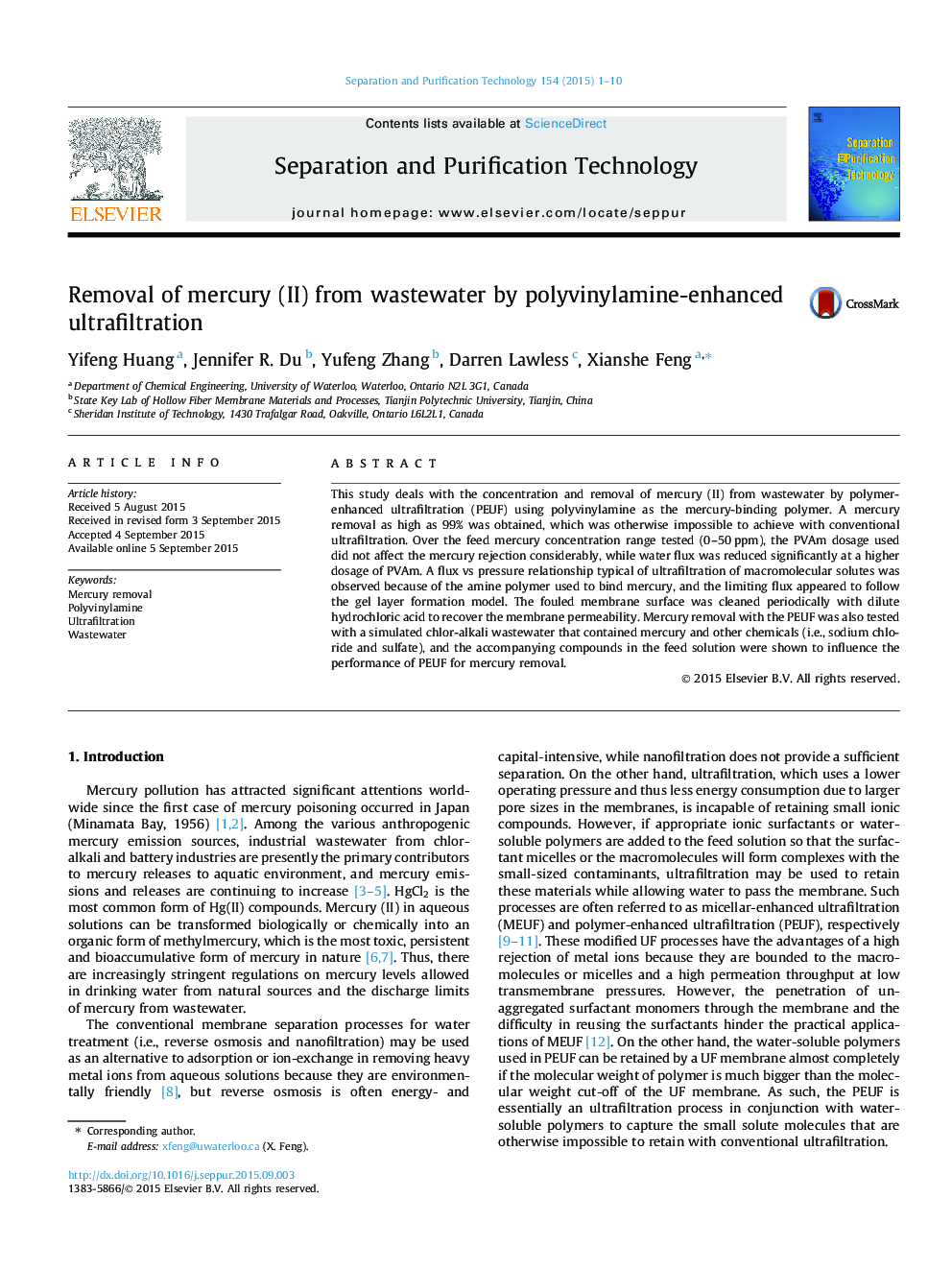| Article ID | Journal | Published Year | Pages | File Type |
|---|---|---|---|---|
| 640287 | Separation and Purification Technology | 2015 | 10 Pages |
•Mercury removal from wastewater by polymer-enhanced ultrafiltration.•Using polyamine to bind mercury, a removal rate as high as 99% was obtained with PEUF.•Polyamine dosage affected water flux, and the limiting flux followed gel formation model.
This study deals with the concentration and removal of mercury (II) from wastewater by polymer-enhanced ultrafiltration (PEUF) using polyvinylamine as the mercury-binding polymer. A mercury removal as high as 99% was obtained, which was otherwise impossible to achieve with conventional ultrafiltration. Over the feed mercury concentration range tested (0–50 ppm), the PVAm dosage used did not affect the mercury rejection considerably, while water flux was reduced significantly at a higher dosage of PVAm. A flux vs pressure relationship typical of ultrafiltration of macromolecular solutes was observed because of the amine polymer used to bind mercury, and the limiting flux appeared to follow the gel layer formation model. The fouled membrane surface was cleaned periodically with dilute hydrochloric acid to recover the membrane permeability. Mercury removal with the PEUF was also tested with a simulated chlor-alkali wastewater that contained mercury and other chemicals (i.e., sodium chloride and sulfate), and the accompanying compounds in the feed solution were shown to influence the performance of PEUF for mercury removal.
